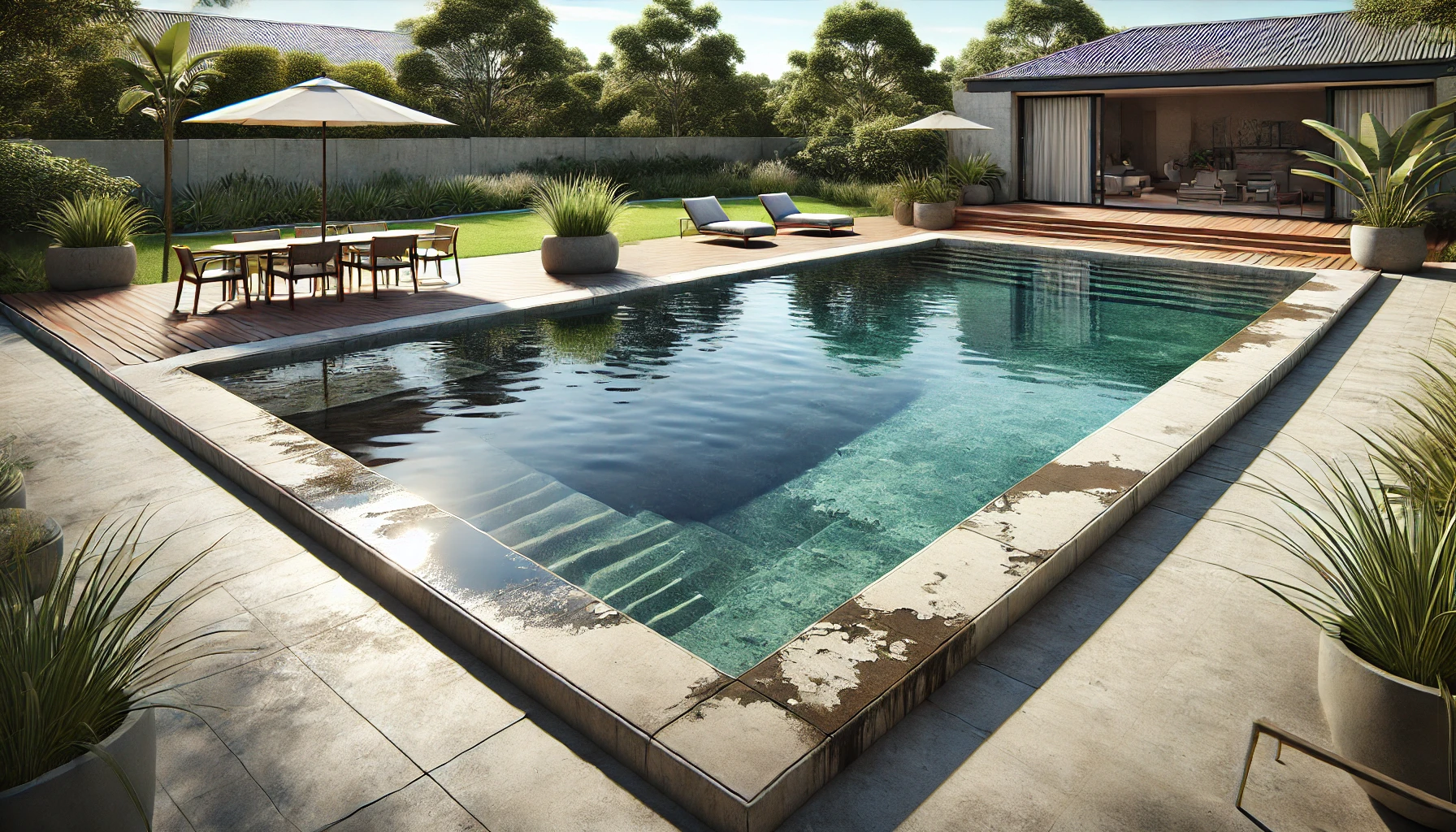
A backyard pool is a long-term investment, and if you own a concrete pool, you may be wondering how long it will last. While concrete pools are known for their durability, they don’t last forever without proper care. Over time, wear and tear from Perth’s climate, regular use, and exposure to pool chemicals can take a toll on the structure.
So, how long can you expect your concrete pool to last? Let’s explore its typical lifespan, the factors that affect durability, and what you can do to extend its life.
How Long Do Concrete Pools Last?
A well-built concrete pool can last anywhere from 25 to 50 years with regular maintenance. However, while the concrete shell itself is long-lasting, the surface finish—whether it’s plaster, tiles, or pebblecrete—requires resurfacing every 10 to 15 years to maintain its condition.
Compared to other pool types:
- Fibreglass pools have a lifespan of 30+ years and require less resurfacing.
- Vinyl liner pools last about 15–20 years, but the liner needs replacing every 5–10 years.
Ultimately, while concrete pools are sturdy, they require more maintenance over time to keep them looking and functioning their best.
Factors That Affect the Lifespan of a Concrete Pool
Several factors determine how long a concrete pool will last before requiring major repairs or resurfacing.
1. Quality of Construction
The way a concrete pool is built plays a big role in how long it lasts. Proper reinforcement, waterproofing, and high-quality materials all contribute to a pool’s durability. Poorly constructed concrete pools may develop cracks, leaks, or surface damage much sooner.
2. Regular Maintenance and Upkeep
Neglecting maintenance is the quickest way to shorten the life of a concrete pool. Pool owners who regularly test and balance their water chemistry, clean their pool, and repair minor cracks can significantly extend their pool’s lifespan.
Common maintenance mistakes that cause premature damage include:
- Allowing calcium buildup, which leads to a rough, abrasive surface.
- Not addressing small cracks early, allowing them to worsen.
- Poor water chemistry, leading to concrete degradation.
3. Perth’s Climate and Environmental Factors
Living in Perth means dealing with high temperatures, strong UV exposure, and hard water, all of which can impact a concrete pool’s longevity.
- Sun Exposure: UV rays break down pool surfaces, causing fading and weakening over time.
- Hard Water: Perth’s naturally hard water leads to calcium deposits, making the pool surface rough and more prone to deterioration.
- Soil Movement: Expansive clay soils in some Perth areas can shift over time, putting pressure on the pool shell and leading to cracks.
4. Frequency of Use and General Wear & Tear
A pool that sees daily use will naturally wear out faster than one used only in summer. Factors such as pool toys, rough play, and even pool cleaners can wear down the surface finish, requiring resurfacing sooner.
Signs Your Concrete Pool is Nearing the End of Its Lifespan
Not sure if your pool needs resurfacing or a full conversion? Here are some clear signs your concrete pool is reaching the end of its usable life:
✅ Cracks in the shell – Small cracks can be repaired, but widespread cracking may indicate structural issues.
✅ Rough, worn surface – If the pool feels rough on your feet, it’s a sign the finish is deteriorating.
✅ Frequent water loss – Persistent leaks mean the concrete may no longer be effectively holding water.
✅ Hard-to-maintain water chemistry – Aged surfaces can make balancing chemicals difficult, leading to murky or unsafe water.
✅ Staining and discoloration – Rust stains, algae stains, and discoloration are often signs of old, porous surfaces.
If your pool is showing multiple signs of aging, it may be time to consider resurfacing—or upgrading to a fibreglass conversion for a longer-lasting solution.
How to Extend the Life of a Concrete Pool
Want to get the most out of your pool before it needs major work? Here’s how you can extend its lifespan:
✔ Resurface every 10–15 years – This helps maintain a smooth, watertight finish.
✔ Keep water balanced – Proper pH, alkalinity, and calcium levels prevent concrete degradation.
✔ Inspect for cracks annually – Small cracks can be patched before they worsen.
✔ Invest in a quality pool cover – This protects against sun damage and debris buildup.
✔ Use gentle cleaning tools – Harsh brushes or aggressive pressure washing can damage the pool surface.
Convert your Concrete Pool Today
When to Upgrade? Considering a Fibreglass Conversion
If your concrete pool is aging and requires constant resurfacing or repairs, upgrading to a fibreglass conversion may be a smarter long-term solution.
A fibreglass conversion involves resurfacing your existing concrete pool with a durable fibreglass shell, providing a smooth, low-maintenance finish that lasts much longer than traditional concrete finishes.
Why More Perth Homeowners Are Upgrading to Fibreglass:
✅ Smoother surface – No more rough or abrasive textures.
✅ Lower maintenance – No need for resurfacing every decade.
✅ Better chemical efficiency – Easier to maintain balanced water chemistry.
✅ More resistant to cracks and leaks – Fibreglass is more flexible than concrete, making it less prone to cracking.
If your concrete pool is requiring more and more maintenance, it may be time to consider a fibreglass conversion.
Convert Your Concrete Pool with Pools 101
Concrete pools are built to last, but without proper maintenance, they can degrade over time. With regular resurfacing and proper care, a concrete pool can serve your family for decades. However, if your pool is showing signs of age and constant repairs are becoming costly, a fibreglass conversion could be the best long-term solution.
Not sure what’s best for your pool? Contact us today for expert advice or a free quote on resurfacing or upgrading your concrete pool.
